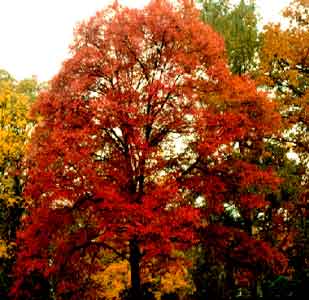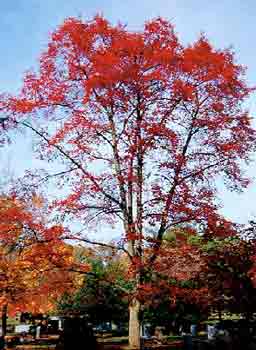 Black Gum - Nyssa sylvatica
Black Gum - Nyssa sylvatica
Tupelo Family (Nyssaceae)
- Native habitat: Dry hills or wet flatlands of the eastern U.S.; a Kentucky native.
- Growth habit: Pyramidal when young, black gum develops an irregular rounded or flat-topped form with age.
- Tree size: This slow-growing tree attains a height of 30 to 50 feet and a width of 20 to 30 feet. Rarely reaches 100 feet in the wild.
- Flower and fruit: Flowers are small and insignificant. The bitter, ½-inch blue-black drupes are favored by wildlife but are not particularly ornamental.
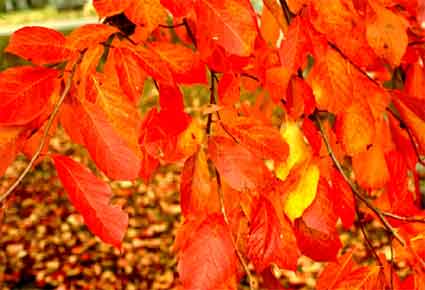 Leaf: This species' outstanding feature is its dark, glossy foliage that consistently develops spectacular crimson, purple, yellow or orange fall color.
Leaf: This species' outstanding feature is its dark, glossy foliage that consistently develops spectacular crimson, purple, yellow or orange fall color.- Hardiness: Winter hardy to USDA Zone 4.
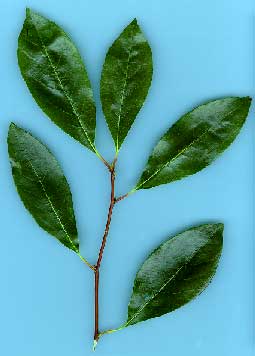 Additional information:
Additional information:Of the Nyssaceae family, only the genus Nyssa is native to North America. Fossils of Nyssa's characteristic ribbed seed reveals the presence of these trees in former geological periods and throughout Europe, Asia and North America. The first Nyssa species described was a swamp-growing type. Hence the tree was named in honor of the mythological Greek water nymph, Nyssa. The specific epithet, sylvatica, means "of the woods." This species has two common names: black gum, referring to the dark leaves; while tupelo is derived from the Creek Indian name for the tree (ito opilwa), which means "swamp tree".
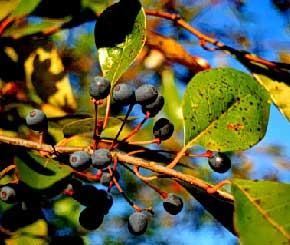 Aged black gums begin decaying from the top so trees become shorter as they grow older. Because decay begins in the heartwood, there are many hollow black gum trees in the forest. The hollow trees are cut down and then cut into short sections and used for beehives. Black gum is one of the best honey-producing trees in the world. Because of its twisted grain, black gum cannot be split so it has been somewhat spared by lumbermen. The resilient wood is good for making tool handles.
Aged black gums begin decaying from the top so trees become shorter as they grow older. Because decay begins in the heartwood, there are many hollow black gum trees in the forest. The hollow trees are cut down and then cut into short sections and used for beehives. Black gum is one of the best honey-producing trees in the world. Because of its twisted grain, black gum cannot be split so it has been somewhat spared by lumbermen. The resilient wood is good for making tool handles.
The national champion black gum (67 feet) is in New Jersey.
Because black gum is difficult to propagate vegetatively, few selections have been made. Because provenance has an effect on fall color display, it is recommended a colorful seedling tree from a local source be chosen.


